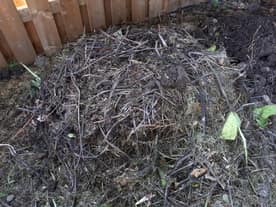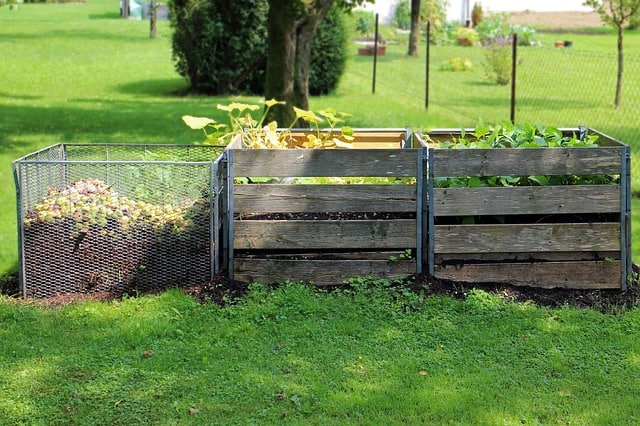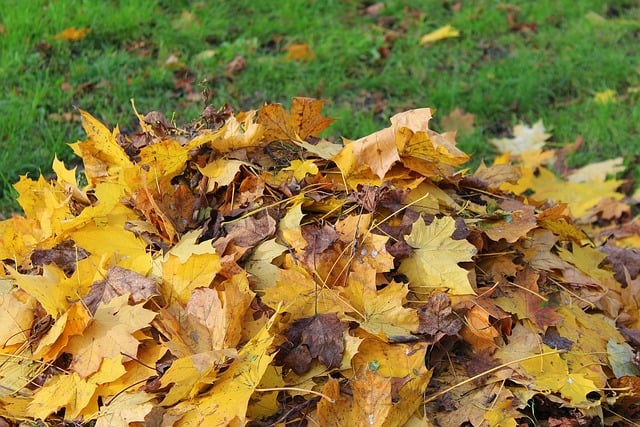The weather is changing, and you’re noticing a lot more leaves in your yard. Maybe you’ve been considering composting them but aren’t sure how to start.
The fastest way to compost leaves is to shred them up and mix them with various nitrogen-rich greens (manure, plant prunings, vegetable waste). After this is done, turn the pile over once or twice a week to help break down the leaves faster. The ratio should be 30 parts leaves to every one part greens.
Take a look at how to do that specifically, as well as other methods that can work effectively to break down the leaves in your yard.
Composting Leaves Quickly: The Basics
One of the most important things to remember when you start composting leaves is the types of leaves that should be used. There are a variety of trees whose leaves don’t produce good compost and can cause the opposite effects of what you want.
Leaves that you want to use are ash, maple, fruit tree leaves, poplar, and willow. These leaves are higher in nitrogen and calcium and lower in lignin, which are all needed in order to compost effectively.
Try to avoid using leaves from beech, oak, holly, and sweet chestnut trees as these are higher in lignin and lower in nitrogen and calcium.
As mentioned above, the most effective and fastest way to compost your leaves is to create a compost system that is made up of 30 parts carbon (leaves) to every 1 part nitrogen (greens).
Your compost will need to heat up to temperature of 160°F (71°C). This will kill any weeds and harmful pathogens. And of course, in addition to a high temperature, there has to be a presence of compost microbes. These are good bacteria that break down the composition of the leaves.
Here are a few essential tips for improving the speed of your leaf composting process:
Shred Your Leaves
The first thing to do is to shred the leaves you wish to compost. By shredding the leaves, you are able to speed up the composting process. The shredded leaves increase the surface area that the microbes have to work with.
You can do this by using a lawnmower to shred the leaves. However, it can be harder to collect them once they are shredded this way.
You can also purchase a shredder that will easily shred the leaves for you. However, if you aren’t looking to spend a lot of money, you can also fill a large bucket with the leaves and use a line trimmer or weed wacker to cut the leaves into smaller pieces.
Mix Your Browns and Greens
Dead leaves in a compost pile are considered “browns.” The greens are fresh greens that provide the browns with nitrogen, which will break them down. These can be grass clippings, plant prunings, or even kitchen waste, such as vegetable scraps, eggshells, and coffee grounds.
Turn It Over Periodically
It’s important to turn your compost pile over at least 1 to 2 times a week. Each time you turn the pile, you should add more greens to the mix.
Turning the pile and adding more nitrogen (AKA more greens) will allow air to circulate and raise the temperature faster.
Keep It Moist
You don’t want your compost to dry out. Drying it out will delay the process. When turning your pile, spray it down with a little water to ensure it stays moist.
You can also keep your pile moist by keeping it covered with plastic. This will trap any moisture and ensure that your compost remains warm without drying it out.
Add Manure
Another method you can use to speed up the process is to add manure to the mix. This will heat up the pile quicker and break things down faster.
You’ll want to use chicken, cow, horse, or rabbit manure to your fall leaf compost. Avoid the manure of cats and dogs because they have a higher risk of contamination.
Different Ways to Make the Compost Pile
The minimum size of your compost should be three feet wide and three feet tall. However, for best results, try to keep your compost pile four or five feet tall and equally as wide.
Here are a few methods you can use to create your compost pile:
Create a Simple Open-Air Pile

This is the least expensive and simplest way to make a compost pile.
An open air pile just involves layering the various greens and browns as you would in any composting system. This is one of the most common styles of composting as it is the easiest to do.
You don’t need any additional materials, except perhaps a shovel or garden fork to turn the compost with.
This type of setup isn’t always ideal in some settings because of the appearance.
Use a Closed Compost Bin

A closed bin compost bin is typically small in size and made from plastic. They have their advantages for smaller locations, and they will keep your compost neat and tidy.
It is difficult, however, to bring this style of composter up to temperature as a hot compost system due to its smaller size.
It is difficult to turn the material inside, which limits your control over the internal temperature.
A tip to help turn the materials easier is to actually pull the bin straight up off the pile. This is usually fairly simple as the composter is usually light and easily lifts up.
After the contents are free to access, it’s is just a matter of mixing the material back into the bin again using either a garden fork or shovel.
Use an Open Bin

The open bins are the best option for the hot composting option. They’re usually made from wood and wire fencing. The openness makes it easy to turn the leaves and speed up decomposition.
The disadvantage here is the varying costs to build them. The price will depend on how big you want your compost pile.
They can range from $25 to $2,000 to construct.
Use a Tumbler
A tumbler will make things easier when it comes time to turn the compost. However, these devices are best used for cold composting.
Similar to the closed compost bins, the temperature is difficult to maintain in tumblers, making it hard to ensure that the weed seeds and harmful pathogens have been killed.
If using a tumbler, it is suggested that you add a shovel of soil into the mix. This will increase the diversity of the microbes in your compost, which will help speed things up a bit.
Potential Problems With Your Compost Pile
Composting leaves doesn’t come without problems. Here are a few of the most common issues:
Overheating
It’s vital not to let your compost pile overheat. There are three elements that must all be present in order for a compost pile to catch fire:
- Dry material with pockets of debris that isn’t uniform
- Pile must have limited airflow
- Improper moisture distribution throughout the pile
While most overheated compost piles do not run the risk of catching fire, they can kill the necessary microbes needed to break down the leaves properly. This is why it is so important to keep your pile from overheating.
Diseased Leaves
It is possible to compost diseased leaves; however, it requires a higher temperature to ensure any harmful pathogens are killed off. It isn’t wise to use any diseased leaves in a compost pile during the winter months.
These leaves can infest the rest of the pile, which could then be transferred to your plants.
Winter Months
If it’s possible, you should still try to turn your compost pile even in the winter months. As spring returns, continue turning at regular intervals to ensure the heat flows throughout.
Other Methods for Dealing With Leaves
Leaf Mold
Leaf mold is the material often found on the forest floor. It isn’t as rich in nutrients as compost is, but it can be used for mulching and controlling weeds.
You can make leaf mold quickly in a garage bag. You’ll want to follow the steps listed above, and you’ll just use a bag as your pile. Make sure to keep them wet, and you can “turn” the pile by shaking the bag every few weeks.
If you do use a bag, just remember to cut a few slits in the bag for airflow.
Summary
Composting can be a great solution to the autumn leaves cluttering your yard. Hopefully, this article has given you the fastest composting options that work for your space.

